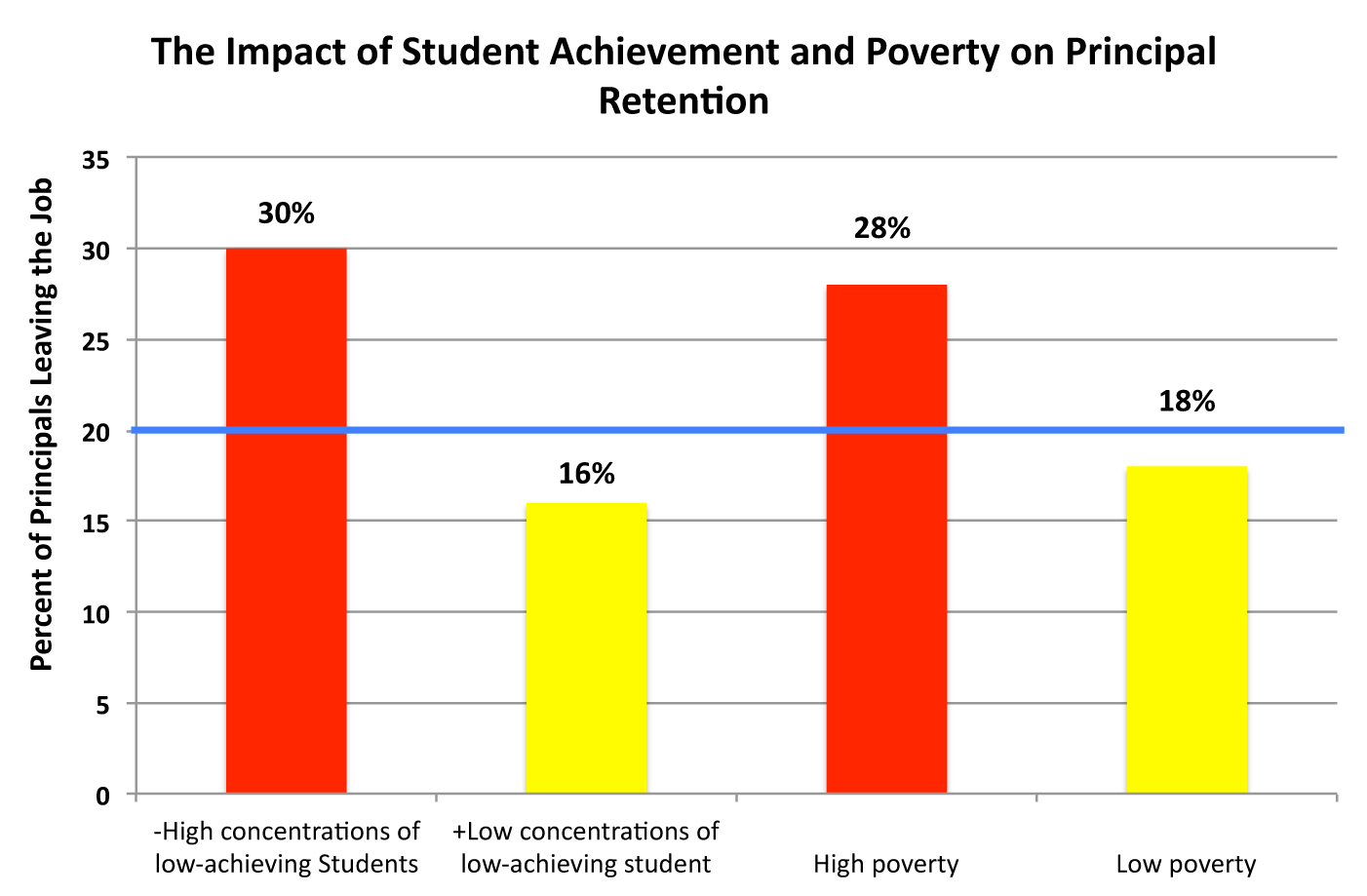Do student achievement and poverty have an impact on principal turnover?
Why is this question important? The turnover of school principals has been shown to have a negative impact on schools and students. The loss of a school's chief manager, guide, and leader can result in stalled initiatives, significant teacher turnover, lower achievement, and lost revenue (Fuller, Young, & Baker, 2007; Miller, 2013). An examination of the disaggregated data on principal tenure heightens the serious nature of the problem. Beteille, Kalogrides, and Loeb's 2012 study found that principal turnover was significantly greater in the very schools requiring the most assistance; namely, schools with the highest concentration of children of poverty and with a history of low achievement. It is important to note that this tendency is especially troubling given the fact that schools whose student bodies consist of high concentrations of students in poverty consistently lag behind in achievement (National Center for Education Statistics. (2013).
In response to the persistent challenge of poorly performing schools to meet school improvement goals, the federal government in 2009 appropriated $4 billion to break this intractable cycle of failure at the nation's worst schools. These efforts to overhaul poorly performing schools placed school principals at the center of reform efforts (Dillon, 2011).
See further discussion below.

Results: The Beteille et al. study found that, on average, 20% of principals leave the job annually. The data suggest a much more serious problem for schools with high concentrations of poor, minority, and low-achieving students. In schools with the greatest need, the turnover rate for principals was almost a third higher than for other schools. This study found that principals escaping underachieving schools tended to move to schools with fewer students in poverty and fewer low-achieving students compared with their previous placements.
Implications: On the whole, the Beteille et al. study found that principal turnover had a negative consequence on schools. The high rates of poverty and low achievement tended to persist with the introduction of each new principal. A consistent pattern of low student performance has a compounding effect as it leads to shorter tenure at the top leadership position, undermining reform efforts, reducing employee morale, introducing elements of chaos into the organization by shattering established relationships among employees and school leaders, and sowing the seeds of uncertainty about existing goals and expectations. The result is employee dissatisfaction, increased teacher turnover, and the institutionalization of a culture of failure.
The study suggests the need for innovative methods to break this cycle. The factors that support and maintain the current model, which encourages flight from the very schools requiring the best talent, must be reversed if lasting change is to occur. The recruitment of specially trained leaders and teachers who are paid salaries commensurate with the challenges of turning around failing schools is essential; that will create the stability and sustainability needed for interventions to become a part of the school's culture.
Study Description: The Beteille et al. study examined longitudinal school principal turnover data for between 360 and 400 schools in the Miami-Dade County Public Schools (MDCPS) district for 2003–04 through 2008–09 school years. Higher linear modeling was used to identify the relationship between principal turnover and student achievement by school characteristics (poverty level, performance in the state accountability system).
Citation:
* Beteille, T., Kalogrides, D., & Loeb, S. (2012). Stepping stones: Principal career paths and school outcomes. Social Science Research, 41(4), 904–919.
Dillon, S. (2011, February 8). U.S. plan to replace principals hits snag: Who will step in? The New York Times.
Fuller, E., Terry Orr, M., & Young, M. D. (2008). Implications from UCEA: The revolving door of the principalship. Charlottesville, VA: University Council for Educational Administration. Retrieved December 9, 2014 from http://www.ucea.org/storage/implications/ImplicationsMar2008.pdf.
Fuller, E. J., Young, M. D., & Baker, B. (2007). The relationship between principal characteristics, principal turnover, teacher quality, and student achievement. Presented at the annual meeting of the American Educational Research Association, Chicago, IL. Retrieved November 20, 2014 from http://www.utaustinerc.org/files/publications/FullerYoung%20Baker%202011.pdf.
Miller, A. (2013). Principal turnover and student achievement. Economics of Education Review, 36, 60–72.
National Center for Education Statistics. (2013). The nation's report card: Trends in academic progress 2012 (NCES 2013-456). Washington, DC: Institute of Education Sciences, U.S. Department of Education. Retrieved February 3, 2015 from http://nces.ed.gov/pubsearch/pubsinfo.asp?pubid=2013456.
* Study from which the graphed data were derived.
